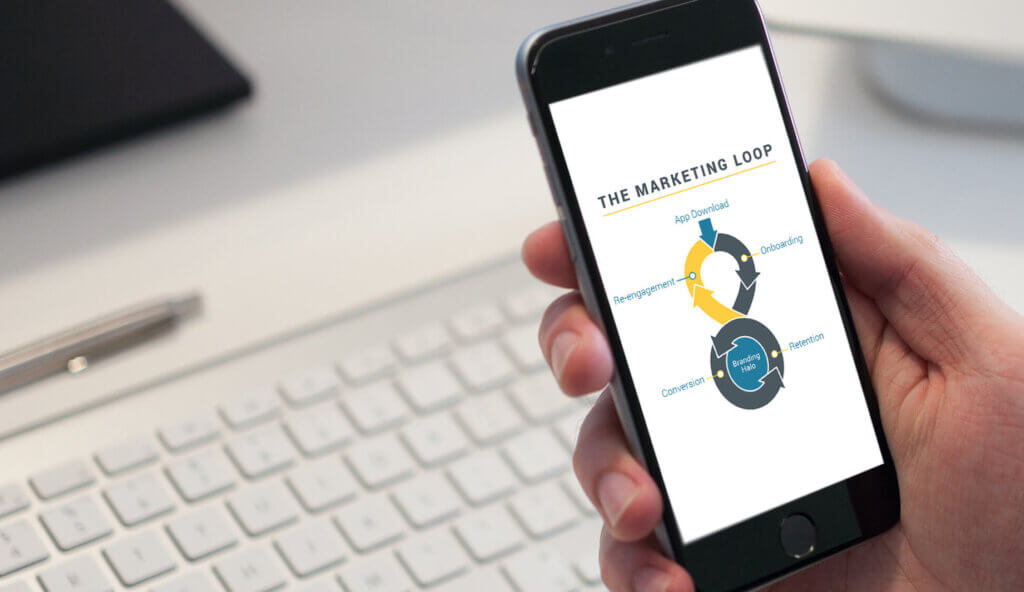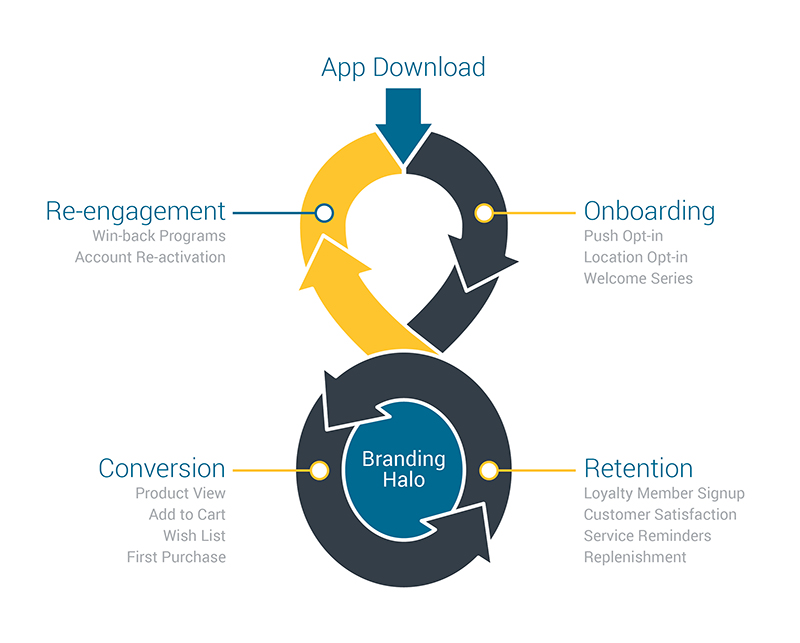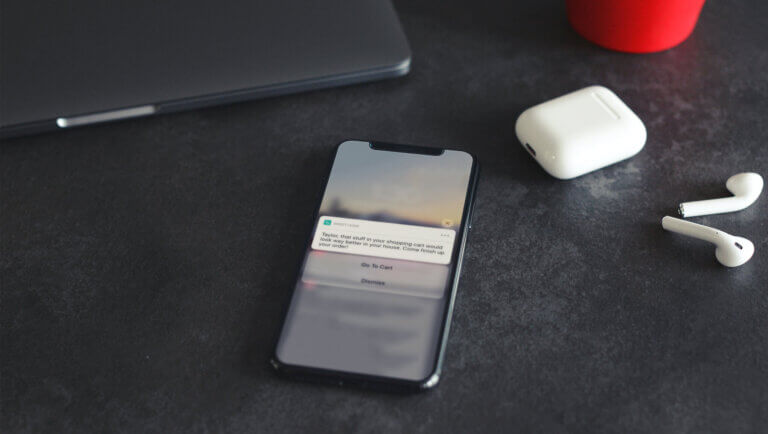
The Mobile Engagement Loop: From Onboarding to Re-Engagement

Share to my network
In this article
Categories
Book a meeting
Connect with our team of experts to discuss your conversion and loyalty goals, and how we can help you achieve them faster.
Get a demoA common model used to depict the buyer journey is the classic marketing funnel, which has served us well. It gave us a common language to talk about the decisions a customer goes through when making a choice. This helped marketing and sales professionals get more specific about the programs and resources to create to make the selection process easier — a very good thing.
On the other hand, the marketing funnel does a poor job of representing the dynamic way information flows through our customers’ minds. While we like to think of decision making as a linear process, it’s more accurate to think of them as a series of fits, starts and do-overs.
Thinking of dynamic decisions on a linear model doesn’t do them justice. What’s more, it leaves a lot of opportunity on the table, because once someone is out of the funnel, you are no longer communicating with them.
In today’s world, people have an immense amount of information at their fingertips through their favorite phones and tablets, as well as an unprecedented level of choice.
For this reason, I argue that the classic marketing funnel is dead. It’s an artifact of the traditional days of broadcast marketing.
Enter the mobile engagement loop.

Mobile is the Cornerstone of Customer Relationships
Why mobile? Well, it’s increasingly the first place users turn. And, more to the point, it allows you to create 1:1 messaging that can scale, since our devices are with us virtually all the time.
With the right user-level data collection, marketing automation and messaging, you can create highly-personalized experiences based on your customer’s latest signals. With this power at your disposal, marketers can move away from a simple conversion-oriented view of leaky buckets to a holistic view of building customer relationships.
The mobile engagement loop takes advantage of the ongoing opportunity for growth and sustained engagement both inside and outside of apps through a cyclical, multi-tiered approach. It includes four stages: onboarding, conversion, retention and re-engagement. Each stage should not only be considered individually, but as part of a whole, for a comprehensive, thoughtful mobile engagement strategy that strengthen relationships with your customers.
Onboarding
Successfully onboarding users after they download your app is your first opportunity to make a good impression. Showcase the beneficial features of your app with a welcome series that helps educate and onboard users.
Provide an overview of the benefits they’ll receive by opting in to push notifications and location services. For example, the NHL grew its opt-in rate by 10% by adding a customized screen before the standard OS opt-in dialogue. The screen clearly explains how enabling push notification and location services helps create the best possible experience for the user.
Proper, thoughtful onboarding increases the likelihood that a user will opt in, creating a direct communication channel between your brand and customers. Other businesses find it helpful to go a step further and offer new users an incentive toward their first purchase to drive conversion. (We’ve outlined our top 10 tips to get the opt-in.)
Retention
The retention stage is where brands should focus on providing value so users do not remove your app from their mobile device.
Consider what utility or benefit your app provides, or how it’s simplifying your users’ lives — the key to retention is to understand and learn how your users want to use the app and then serve them content based on what is important to them.
In the retention stage, it’s especially crucial to get your communication cadence and strategy correct. Too much communication can annoy users, while not communicating enough may lead to lower app usage.
Conversion
Conversion actions will vary based on industry and brand objectives, but should focus on providing value to users with every interaction. A user adding a product to their shopping cart, “favoriting” a news story, booking a reservation or requesting product updates could all be considered important conversion actions.
In a mobile marketing strategy, these types of conversion actions are critical because they enable brands to personalize in-app messages and push notifications to their app users. Personalized messages are four to seven times more effective than generic ones and establish a stronger connection between your brand and the user.
In the graphic above, the bottom half of the loop is filled in by the words “Branding Halo.” The Brandin Halo – a user's positive perseptions of an connections with your brand – is the result of several successive conversion-to-retention cycles. It follows the premise that the more transactions a user completes, the deeper the app becomes entrenched within a user’s patterns, ultimately creating more brand value.
Re-Engagement
Invariably, a portion of your customers may lose interest and become dormant or uninstall your app. The mobile engagement loop recognizes that users sometimes fall out of a relationship with a brand.
However, this doesn’t mean that they’re gone for good. Your brand still has an opportunity to win them back and resurrect the relationship if you have the right strategy and technology in place.
Determine what actions or communication may entice your users into coming back — do they just need a gentle reminder, or maybe an incentive to spark their interest? Do they know about the latest functionality just added to your app? This is a great opportunity to re-engage them with a win-back ad campaign. Or you could use a different channel such as e-mail, re-targeting, mobile wallet or other channels.
You can also ask dormant customers for feedback on why they left. Show them you care by finding out how you can improve their app experience. This can be valuable for retargeting efforts for users who have deleted your app.
More about Mobile Engagement
To learn more about connecting with customers on mobile — building a conversion strategy, getting the opt-in, common industry benchmarks, engagement best practice, etc. — visit our Content Library or contact us.

